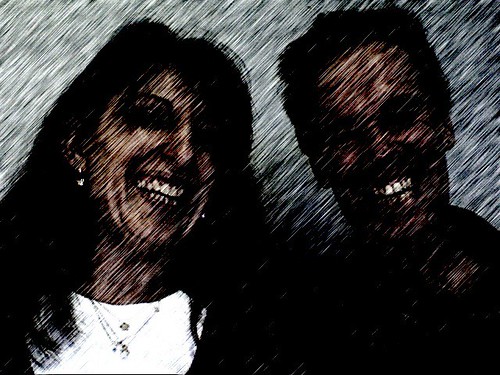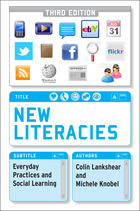Friday, February 08, 2008
Video247: Mike Wesch and his YouTube ethnographies
The title of Mike Wesch's talk was "Mediated culture: steps towards an ethnography of YouTube" and was a very interesting account of how research methods themselves need to change in response to new contexts of study. This is something that Colin and I have been interested in for a few years now.
Mike opened his talk with some pretty compelling YoutTube stats. I think i have these numbers right: around about now, there are 70 million video clips uploaded to YouTube at any one point in time; the average length of clips is 2.8 minutes each, which adds up to about 3.3 million hours or 377 years of viewing pleasure. this is also more hours of video footage than that created by major broadcast networks combined. YouTube is added to 135 times faster than you can watch it.
Mike and his students' explorations of ethnography and YouTube by asking: "How can you step into YouTube and get noticed?" They began, in 2005, with a viral video contest amongst themseleves to see who could get noticed. Many of the student participants in this project (10 in all) were first time video makers; nonetheless, many of them were able to attract thousands of viewers. The "winner" of this competition was this video: "The Internet has a Face" which has well over 10,000 views at this point (posted April 7, 2007).
At this point, Mike also gave us some very interesting backstory to his own hugely successful viral video which he created in 2005: The Web is Us/ing Us. His clip received 250 views on the first day it was uploaded to YouTube; by the second day it was 1, 154 views. the URL for the clip was distributed heavily via blogs and discussion boards and lists, and online services like Digg (where it moved to the front page of Digg--a keen index of its popularity--by the third day of release; the clip was also tagged on Delicious and aggregated by RSS feeds. Four days out from its initial posting, the clip was listed at top of the most most viewed on Technorati. Right now, it has had almost 5 million views (not counting views of downloaded copies and shown in lecture halls).
For their ethnography of YouTube, Mike and his students set up a purpose-built graphical user interface through which to view and comment on YoutTube videos as a way of generating fieldstudy-like notes. They began by stuyding the front page of Youtube. they found that 59% of YouTube clips are in English, and that a large proportion of the clips are actually commercially made. They also found that about 2 percent of the clips were directly about or to do with the "YouTube community" (e.g., users who see themselves as members of the YouTube community often refer to "YouTubia" as community space). Video diary posts are a classic example of this.
Within this latter subset of video clip types--those focussed on vlog posts--they found:
• Strong love and hate expressed. This included, for example, "haters" making movies in response to other people's vlog clips that basically said, "You suck". the group argued that these hater videos were made possible through the relative anonymity of YouTube (despite the visual element and people being quite happy about showing their faces). They also found people making profound connections through the same "distancing" effect of YouTube that attracts haters. David argues that these "connection" videos are popular because it enables viewers to seeing someone’s humanity without having to immediately provide a social response as is required in face-to-face encounters.
• Interestingly, they also speculated the people bonding on YouTube aren’t the sort who typically bond in meat space
• they found that "authenticity" was very much valued among vloggers (about getting yourself "real" on your vlog clips)
• The group also noticed quite a few moments of catharsis where people often display a sense of "identity resolution" where they seem to come to know themselves better, or obtain important insights into who they are (or, as I see it, insights into revelations of some version of who they are)
• Interestingly, even though it’s one of the most public spaces online, YouTube often is treated like a private confessional.
As part of their rethinking of ethnographic research methods, the group arrived at the concept of "armchair participant observation" to describe how they were collecting their data. A key element of their participatory observation involved them in making their own diary vlog clips. This had interesting outcomes for this group of researchers who found themselves having to face the fact that they were in a sense speaking to themselves in the future because their videos can be revisited any number of years hence. they also reported struggling with which dimension(s) of themselves to present in their respective vlogs. One outcome of this struggle was the development of the concept of "fake authenticity" or "contrived authenticity" to help them explain the very public persona they felt compelled to adopt as they made their video diaries.
Results of their study can be found here.
Labels: video247








